DFI X48 LT T2R: Floats like a Butterfly…
by Rajinder Gill on April 28, 2008 4:00 AM EST- Posted in
- Motherboards
Board Layout and Features
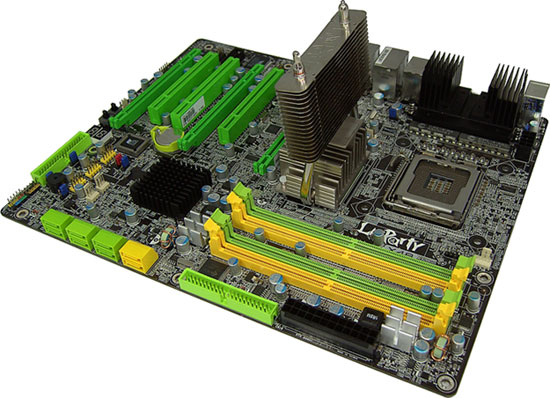 |
As with other LANParty boards, DFI's near-flawless layout continues. Cooling on the LT version is probably the best overall solution rather than opting for the upcoming UT version of this board, which connects all three heatsinks with a heatpipe. Having independent heatsinks allows users to replace a single section with more exotic cooling should they so desire, although we found that the stock Northbridge cooler (supplied by Thermalright) is very good. Teamed up with suitable airflow the Thermalright NB cooler is capable of dissipating large amounts of heat. Although we still recommend that active cooling is used on both the Northbridge and PWM area when overclocking this board.
Large CPU coolers like the Thermalright Ultra-120 must be mounted in horizontal orientation to provide clearance for the stock Northbridge cooler. This is not really a bad thing - using two 120mm fans in push-pull on the Thermalright 120 cooler will also cool the Northbridge heatsink very effectively. Using this combination of coolers with two 120mm fans in push-pull kept our full-load Northbridge temperatures under 42C even while using around 1.6VMCH.
We must stress that cooling the PWM heatsink is a little tricky when the board is mounted in a case. We used a small fan in combination with a couple of small machine screws to attach the fan to the PWM heatsink. We recommend that users monitor PWM load temperatures via the supplied ITE monitoring software and try to ensure that PWM temperatures remain around 50C under full load.
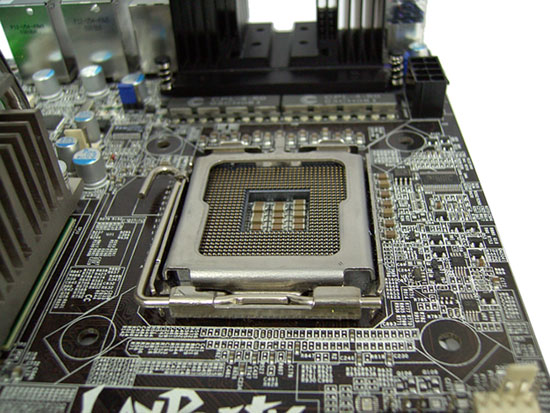 |
All of DFI's performance oriented motherboards over the past year have featured 8-phase Volterra digital PWM circuitry to supply CPU power, and there's no change here. However, we would like to see the inclusion of a heatsink backplate on future DFI boards to ensure that the small Volterra MOSFETs do not lose contact with the heatsink when the motherboard bows under pressure from some of the higher torque mounting systems used on CPU coolers. As the Volterra MOSFETs are so small, any loss of contact between the FET and heatsink during a heavy transient load will result either in board shutdown or something catastrophic.
Even though we did not experience these problems ourselves, we feel the current implementation certainly has room for improvement. The EPS 12V power connector sits just behind the PS/2 ports at the top corner of the board, while the CPU fan header is situated adjacent to the first DIMM slot. There are six fan headers on the board - three of which are OS controllable via the supplied ITE monitoring software.
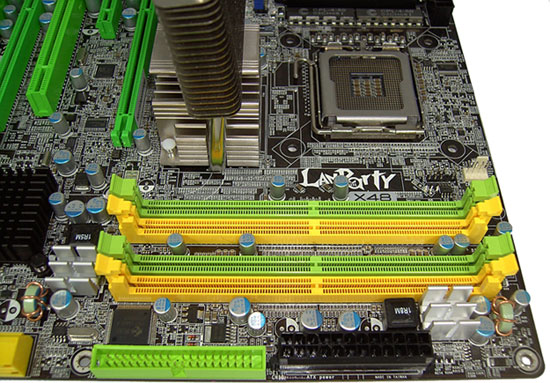 |
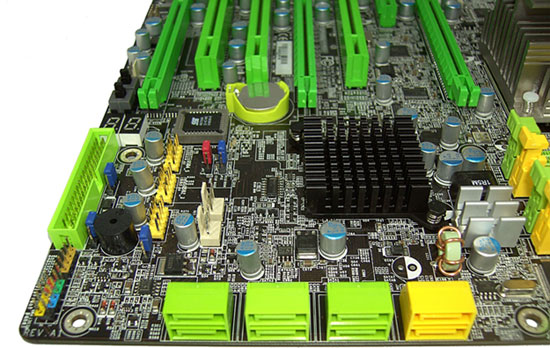 |
The overclocking friendly layout continues to an easily accessible CMOS battery, and onboard power and reset switches featuring EZ CMOS clear and of course the LED POST Code display. The floppy drive connector sits at the lower edge of the board to the right of the POST Code display. The six Intel ICH9R SATA ports are located at the lower right edge of the board, facing to the right making connector insertion a tad awkward at once the board is mounted in a case. There are also two JMicron JMB363 SATA ports situated above the Intel SATA ports.
The memory slot connectors are situated almost in line with the primary PCI Express connector; large graphics cards such as the 8800 GTX may have to be removed when swapping out memory modules. The 24-pin ATX connector is placed to the right of the slots and does not hinder the use of the IDE connector below it.
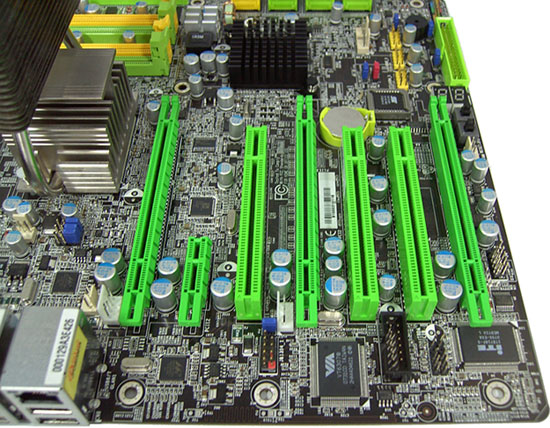 |
The expansion slot layout is comprised of three PCI Express x16 full length slots (two x16 bandwidth and one x4 bandwidth slot), one PCIEx1 slot, and three PCI slots. The supplied Bernstein Audio module features the Realtek ALC885 8-channel High Definition Audio CODEC and has its dedicated connector placed between the PCI slots, rendering one of the PCI slots inactive if the module is used. There are three onboard USB connectors for an additional six USB ports, a connector for an external COM port, one IrDA connector, one CIR connector, and a connector for the second IEEE-1394 port.
 |
The rear I/O options include six USB ports, an IEEE-1394a port, two Gigabit LAN ports with teaming options, and finally the standard PS/2 keyboard and mouse ports.










24 Comments
View All Comments
lopri - Monday, April 28, 2008 - link
Sorry if I missed it but I can't locate it?Rajinder Gill - Monday, April 28, 2008 - link
Hi,There is no PDF, it is an Adobe flash player video on page 14..
regards
Raja
Kromis - Monday, April 28, 2008 - link
I'm loving the green!Kromis - Monday, April 28, 2008 - link
I haven't heard/read much from DFI in a while